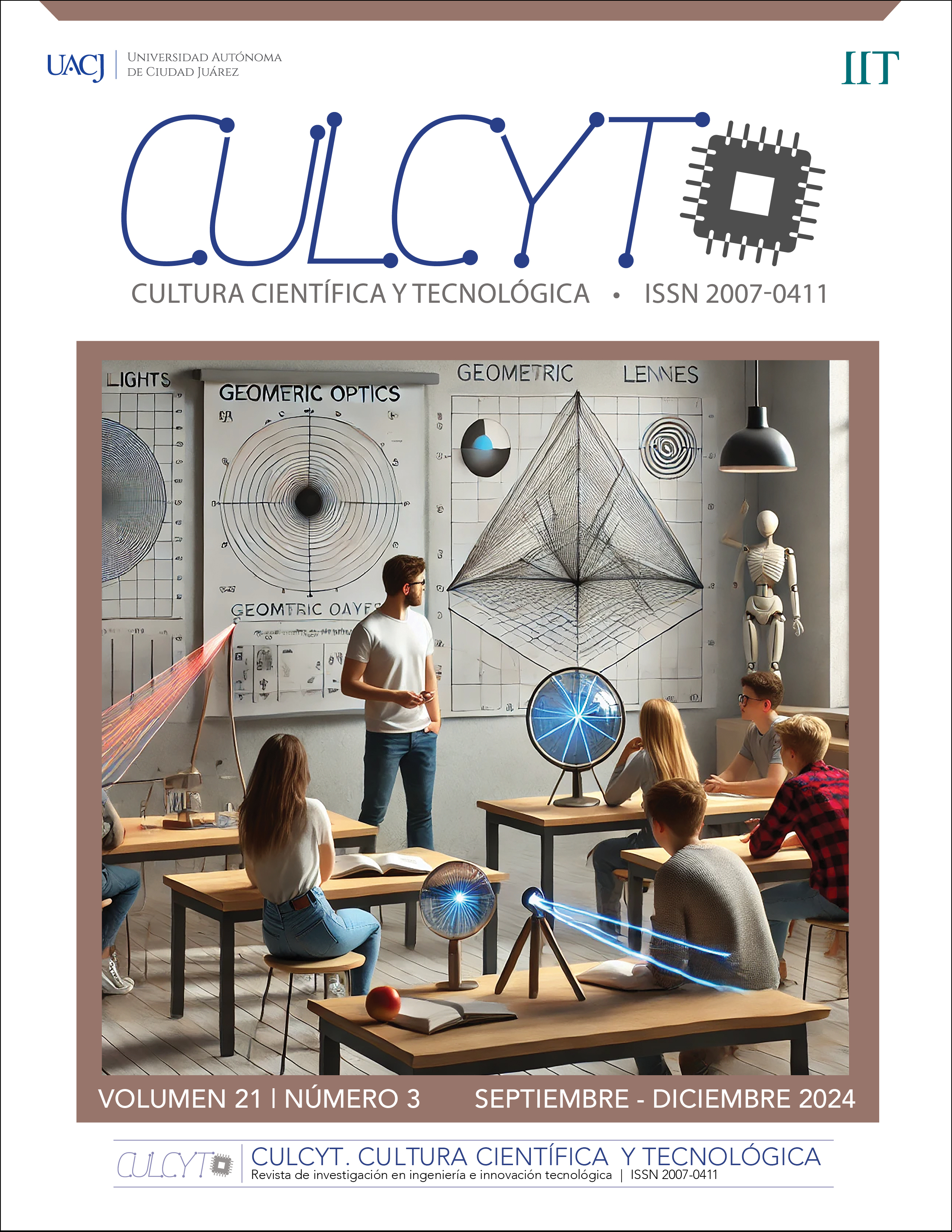Project-based learning in STEAM: interdisciplinary implementation applied to the simple harmonic oscillator
DOI:
https://doi.org/10.20983/culcyt.2024.3.2e.7Keywords:
experiments, simple harmonic oscillator, Lissajous, PBL, STEAMAbstract
The purpose of this work is to explore the behavior of the simple harmonic oscillator in two dimensions and the formation of Lissajous figures using the methodological technique of Project-Based Learning (PBL), which develops skills in problem solving, reinforcing the learning of the concepts used in physics and motivating students to be proactive. Using experimental tools, university students from Sinaloa, Mexico, designed and built harmonographs, which are mechanical devices that trace complex curves based on coupled perpendicular oscillations. These figures, known as Lissajous figures, are essential in the visualization of resonance and oscillation phenomena in mechanics. This project reinforced concepts of Newtonian mechanics, fostered practical and analytical skills in students, and promoted interdisciplinarity by integrating knowledge from different areas, which allowed them to be guided by the STEAM model (science, technology, engineering, art, and mathematics). Through hands-on experimentation, students gained a deeper understanding of the principles of superposition and the interaction of harmonic movements, living a comprehensive and applied learning experience. The PBL technique allowed them to focus on the final product, that is, on the figures, while STEAM highlighted the process of carrying out the work with the integration of knowledge from various disciplines.
Downloads
References
J. W. Bequette y M. B. Bequette, “Art Integration and the STEAM Initiative: A Symbiotic Relationship”, Art Education, vol. 65, n.º 2, pp. 40-44, 2012.
C. F. Quigley y D. Herro, An Educator's Guide to STEAM: Engaging Students Using Real-World Problems. Nueva York, NY, EUA: Teachers College Press, 2019.
D. C. Sickler-Voigt, STEAM Teaching and Learning Through the Arts and Design. Nueva York, NY, EUA: Routledge, 2023.
J. Barell, Problem-Based Learning: An Inquiry Approach, 2.ª ed. Thousand Oaks, CA, EUA: Corwin Press, 2007.
A. Walker, H. Leary y C. Hmelo-Silver, eds., Essential Readings in Problem-Based Learning: Exploring and Extending the Legacy of Howard S. Barrows. West Lafayette, IN, EUA: Purdue University Press, 2015.
D. Halliday, R. Resnick y J. Walker, Fundamentals of Physics, 7.ª ed. Nueva York, NY, EUA: Wiley, 2002.
M. Alonso y E. Finn, Physics, 1.ª ed. Reading, MA, EUA: Addison-Wesley, 1992.
J. B. Marion y S. T. Thornton, Classical Dynamics of Particles and Systems, 5.ª ed. Belmont, CA, EUA: Brooks Cole, 2003.
G. Yakman, “STEAM Education: An Overview of Creating a Model of Integrative Education”, en Proceedings of the Pupils’ Attitudes Toward Technology Conference, Netherlands, 2008.
J. R. Savery y T. M. Duffy, “Problem-Based Learning: An Instructional Model and Its Constructivist Framework”, Educational Technology, vol. 35, n.º 5, pp. 31-38, 1995.
J. Binney y S. Tremaine, Galactic Dynamics (Princeton Series on Astrophysics). Princeton, NJ, EUA: Princeton University Press, 2008.
J. L. Meriam y L. G. Kraige, Engineering Mechanics: Dynamics, 6.ª ed. Nueva York, NY, EUA: Wiley, 2008.
P. A. Tipler y G. Mosca, Physics for Scientists and Engineers, 6.ª ed. Nueva York, NY, EUA: Freeman, 2008.
R. Stallings, “Harmonographs: Using the build-design process to improve functionality”, en 2017 12th International Conference on Computer Science and Education (ICCSE), 2017, pp. 314-318, doi: 10.1109/ICCSE.2017.8085509.
E. Mach, The Science of Mechanics: A Critical and Historical Account of Its Development. La Salle, IL, EUA: Open Court Publishing, 1893.
J. G. Landels, Engineering in the Ancient World. Berkeley, CA, EUA: University of California Press, 1978.
C. Huygens, Horologium Oscillatorium. París, Francia: publicación propia, 1673.
J. B. L. Foucault, Démonstration physique du mouvement de rotation de la terre au moyen du pendule. París: Bachelier, 1851.
H. D. Young y R. A. Freedman, University Physics with Modern Physics, 14.ª ed. Boston, MA, EUA: Pearson, 2015.
A. E. Bell, “The Horologium Oscillatorium of Christian Huygens”, Nature, vol. 148, pp. 245-248, 1941, doi: 10.1038/148245a0.
J. A. Lissajous, Mémoire sur l’étude optique des mouvements vibratoires. París: Mallet-Bachelier, 1857.
D. Kleppner y R. Kolenkow, An Introduction to Mechanics, 2.ª ed. Cambridge: Cambridge University Press, 2014.
Downloads
Published
How to Cite
Issue
Section
License
Copyright (c) 2024 Jesús López Hernández, Elizabeth Galindo Linares

This work is licensed under a Creative Commons Attribution-NonCommercial 4.0 International License.
Todos los contenidos de CULCYT se distribuyen bajo una licencia de uso y distribución “Creative Commons Reconocimiento-No Comercial 4.0 Internacional” (CC-BY-NC). Puede consultar desde aquí la versión informativa de la licencia.
Los autores/as que soliciten publicar en esta revista, aceptan los términos siguientes: a) los/las autores/as conservarán sus derechos de autor y garantizarán a la revista el derecho de primera publicación de su obra; y b) se permite y recomienda a los/las autores/as agregar enlaces de sus artículos en CULCYT en la página web de su institución o en la personal, debido a que ello puede generar intercambios interesantes y aumentar las citas de su obra publicada.



